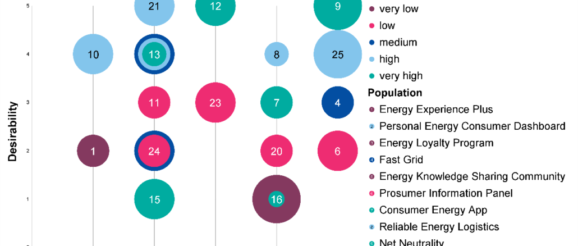The Roles of Enterprise Architects in Innovation – Part 3 – BiZZdesign Enterprise Architecture and Business Process Management Software

In our previous two blogs, part 1 and part 2, we introduced the three roles of architects in innovation:
We discussed numbers 1 and 2 previously and will focus on number 3 in this blog. We also want to know your opinion, so please fill in our poll at the end!
As we said in the previous installment, we think that architects can provide executives, innovation leaders and innovation teams with smart insights that support better innovation decisions. We believe there is an opportunity for architects to innovate innovation, so to speak.
Initiating Innovation
(Teams of) Architects have pretty unique and deep business & IT knowledge and with their ‘horizontal’, broad perspective can see the opportunities and impact of trends where others focus more on the deep but narrow details. In our first installment in this series, we argued that architects can help their enterprise become more innovative by shaping space for innovation, spotting trends and analyzing their opportunities and impact. Our second post discussed the role of architects in ensuring a coordinated innovation approach, focused on the potential business value of innovation. Together this gives you room for and a grip on innovation.
Fight the “shiny object syndrome” and become a true innovation champion
In many organizations, we see people run after the latest shiny bauble. You know how it is: some manager says “IoT is hot, we need to do something with that” and people start running. Real business impact, however, requires deep insights into not just the (often technological) innovation itself but first and foremost into its potential business benefits (and risks!). This requires a combination of knowledge of both an enterprise’s business and IT, something that architects are uniquely positioned to offer.
The next step is to proactively engage with management in initiating innovation based on these insights and unlocking the true value of these innovations. This way, architects can become a trusted adviser of management on innovation.
Trigger the right innovations at the right time
In our previous blog, we showed how you can manage a portfolio of innovations based on aspects such as feasibility, desirability, strategic fit and adaptability, using architecture-based analyses to score ideas along these axes. You need a balanced portfolio of low-risk, low-return and high-risk, high-return innovations: tweaking existing processes just a bit in order to squeeze out the last drop of efficiency is not enough, but aiming exclusively for ‘loonshots’ and ignoring day-to-day improvements isn’t a good idea either. Based on the evaluations we mentioned, architects can trigger the right innovations at the right time. With their broad overview of existing and planned developments in the organization, they can initiate innovations that fit the business context and are well-timed, for example to piggyback on other changes or to take advantage of short-term market opportunities.
Innovate innovation itself
Finally, architects can play a key role in innovating the innovation processes in organizations. Successful innovation and change is not something that is confined to some department of experts in an ivory tower. Rather, it requires collaboration between many roles within the enterprise, engaging and convincing all manner of employees and other stakeholders, and bringing together bottom-up, top-down, and lateral flows of ideas. Again, architects with their broad knowledge and contacts in the organization can play a key role in facilitating this.
Moreover, you cannot manage innovation using whiteboards, sticky notes and beer mats alone, especially not in larger organizations with inputs from numerous angles and many moving parts that need to be coordinated. Successful innovation requires the right support: a shared space for innovation management. This is not necessarily a single tool or platform, but rather a well-integrated combination of instruments. That way, contributions of individuals and teams from across and beyond the enterprise can be brought together to reinforce each other.
Architecting such an environment is another contribution that architects have to offer to their organization. We at BiZZdesign are of course in the middle of that development too, with our HoriZZon platform that integrates with all kinds of other environments and can be the hub of such an innovation space.
In the webinar Business Model Innovation for Architects and their Stakeholders we presented the Business…
